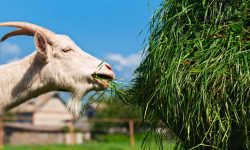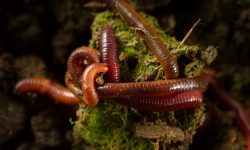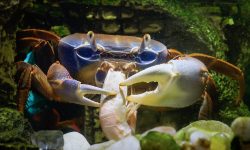Pandas are easily the most beloved and recognizable animals on the planet. Known for their round faces, playful personalities, and peaceful nature, these gentle giants have a surprisingly unique diet. Despite being classified as carnivores, pandas are almost entirely herbivorous, relying primarily on bamboo for their nutrition.
Found in the misty mountains of China, giant pandas spend much of their time eating — nearly 12 to 16 hours every day. Their strong jaws and teeth are perfectly adapted to crush tough bamboo stalks, yet they occasionally enjoy other foods when available.
Understanding what pandas eat is not only fascinating but also crucial for conservation efforts. Their highly specialized diet affects their habitat, behavior, and even their survival in the wild. Let’s explore in detail what foods pandas love most and how each contributes to their well-being.
Understanding the Panda Diet

The Nature of a Bamboo Diet
Though pandas belong to the bear family, their diet is far from typical. Over 99% of what they eat is bamboo — an unusual choice for a mammal with carnivorous ancestry. Their digestive system is similar to that of meat-eating animals, yet they’ve evolved to process fibrous plant material efficiently.
To get enough nutrients, pandas consume massive amounts — up to 80 pounds (36 kg) of bamboo daily. They rely on specific bamboo species that vary with the season, ensuring a consistent food supply year-round.
Nutritional Balance and Adaptation
Because bamboo is low in protein and energy, pandas must eat almost constantly to meet their needs. They have a slow metabolism, which helps conserve energy and adapt to their low-calorie diet. Occasionally, they’ll supplement bamboo with fruits, roots, eggs, or small animals to gain extra nutrients.
Their large molars, strong jaws, and pseudo-thumb (a modified wrist bone) are all evolutionary traits that help them grasp and chew bamboo efficiently.
Seasonal Variations in Diet
In spring and summer, pandas prefer bamboo shoots, which are soft and protein-rich. During autumn and winter, they switch to tougher bamboo stems and leaves. Wild pandas also forage for fruits and flowers when available, while captive pandas enjoy a more varied menu designed by caretakers.
This adaptability, though limited, helps them survive in changing environments and supports their overall health.
20 Foods Pandas Love the Most
1. Bamboo Shoots
Bamboo shoots are the panda’s favorite food and the core of their diet. These tender sprouts are rich in protein and easy to chew, especially for young or elderly pandas.
Shoots appear mainly in spring and early summer, providing essential nutrients like amino acids and moisture. Pandas seek out the freshest shoots by smell and texture, often stripping them with precision before eating.
In captivity, shoots are carefully harvested and provided daily to keep pandas healthy and satisfied.
2. Bamboo Leaves
Bamboo leaves are another essential part of the panda diet, especially during cooler months when shoots are scarce. They contain more fiber and less protein but offer hydration and roughage.
Leaves help maintain a panda’s digestion and tooth health. Pandas often peel away the outer layers to reach the soft inner portions, consuming both young and mature leaves.
Their sharp teeth and strong jaw muscles make it easy to tear through tough plant fibers.
3. Bamboo Stems
Older bamboo stems are tougher and more fibrous, yet adult pandas can chew through them easily. Stems provide bulk to their diet, keeping the digestive system active and preventing constipation.
Pandas use their molars to crush the stems into manageable pieces before swallowing. The fibrous texture also helps wear down their continuously growing teeth.
While stems offer less nutrition than shoots or leaves, they are an important part of the panda’s natural feeding rhythm.
4. Fruits
In the wild, pandas occasionally eat wild fruits like apples, pears, and berries when bamboo is limited. Fruits provide natural sugars, vitamins, and hydration, giving them an energy boost.
In captivity, zookeepers offer apples and bananas as healthy treats. These are given sparingly to prevent excess sugar intake.
Fruits also serve as enrichment, stimulating natural foraging instincts and keeping pandas mentally active.
5. Vegetables
Captive pandas enjoy vegetables such as carrots, sweet potatoes, and pumpkins. These provide fiber, vitamins A and C, and essential minerals.
Root vegetables also help maintain healthy teeth and gums due to their firm texture. They’re often served chopped or steamed to make digestion easier.
Vegetables bring dietary variety and balance to a panda’s mostly bamboo-based meals.
6. Apples
Apples are one of the most common fruits offered to captive pandas. They’re sweet, hydrating, and easy to digest.
They provide natural sugars for quick energy and vitamins that support a healthy immune system. Pandas particularly enjoy the crisp texture, often holding slices delicately in their paws.
However, apples are treats — not a staple — to avoid disrupting their natural nutritional balance.
7. Carrots
Carrots are packed with beta-carotene, which promotes good vision and a healthy coat. Pandas enjoy their crunchiness and mild sweetness.
Carrots also help strengthen their jaws and teeth through constant chewing. In zoos, they’re a popular reward during training or enrichment sessions.
Regular inclusion of carrots adds valuable nutrients and variety to the panda’s diet.
8. Sweet Potatoes
Sweet potatoes are soft, nutritious, and energy-rich. They’re full of carbohydrates and vitamins that support the panda’s metabolism.
Their natural sweetness makes them an irresistible treat. In captivity, they’re cooked or steamed for easier digestion.
This food helps balance the high-fiber bamboo diet by providing extra calories.
9. Corn
Corn is sometimes included in the diet of captive pandas as a supplementary carbohydrate source. It’s high in energy and easy to digest.
Ground or boiled corn can be mixed with other vegetables to add flavor and variety.
Although not a natural food for wild pandas, it provides valuable calories and supports overall health in captivity.
10. Honey
Honey is an occasional treat given to pandas in zoos. Its sweetness stimulates appetite and provides a quick burst of energy.
Keepers often use honey to encourage shy or recovering pandas to eat. It also helps with medication delivery by masking bitter tastes.
While pandas enjoy honey, it must be offered sparingly to prevent excess sugar intake.
11. Eggs
In rare cases, wild pandas may consume bird eggs or small animals. Eggs provide protein and fat that bamboo lacks.
This behavior reflects their carnivorous ancestry, although it’s not common in modern pandas.
In captivity, boiled eggs may occasionally be included for variety or nutritional supplementation.
12. Flowers
Pandas sometimes eat wildflowers such as dandelions and clover. Flowers offer trace vitamins and antioxidants that support health.
Their soft texture and fragrance attract pandas, especially during spring.
In sanctuaries, edible flowers may be included as seasonal enrichment to stimulate natural foraging behavior.
13. Tree Bark
During lean seasons, pandas may chew on soft tree bark or roots. Bark provides fiber and minerals that help maintain digestion.
Chewing bark also keeps teeth trimmed and jaw muscles strong.
Species like willow and maple are preferred because of their mild taste and flexibility.
14. Grass
Wild pandas occasionally graze on grasses near bamboo forests. These grasses add moisture and extra fiber to their diet.
They’re especially helpful during summer when bamboo moisture content decreases.
Grasses complement bamboo well, ensuring consistent digestion and hydration.
15. Milk (for Cubs)
Baby pandas, called cubs, feed exclusively on their mother’s milk for the first several months of life.
Panda milk is rich in fat and protein, promoting rapid growth and immune strength.
As they grow older, cubs gradually transition to soft bamboo shoots and fruits under the mother’s supervision.
16. Rice Cakes
In captivity, pandas are sometimes fed specially prepared rice cakes made from rice flour, oats, and corn.
These cakes are fortified with vitamins and minerals to meet their dietary needs.
Rice cakes serve as convenient, balanced supplements, especially for pandas under human care.
17. Sugar Cane
Pandas adore sugar cane for its juicy sweetness and fibrous texture. It provides hydration and a small energy boost.
Chewing sugar cane also helps clean their teeth naturally.
However, it’s considered a treat rather than a staple due to its high sugar content.
18. Tree Leaves
Besides bamboo, pandas eat leaves from other trees like willow and birch. These leaves offer additional fiber and minerals.
They’re especially useful during seasonal bamboo shortages.
Tree leaves add dietary variety and contribute to oral health by encouraging natural chewing.
19. Cornbread
Some zoos provide small portions of cornbread to pandas as enrichment food. It’s soft, tasty, and fortified with essential vitamins.
Cornbread encourages foraging behavior and adds variety to their diet.
However, it’s always given in moderation to prevent dependence on processed foods.
20. Water
While not a food, water is vital for panda survival. It helps digest bamboo and regulate body temperature.
Pandas drink from streams and rivers near their mountain habitats, often after long feeding sessions.
Consistent access to fresh water ensures hydration and overall health for both wild and captive pandas.
FAQs About What Pandas Eat
Do Pandas Eat Only Bamboo?
Mostly yes. Bamboo makes up over 99% of a giant panda’s diet. However, they occasionally eat fruits, vegetables, or eggs for extra nutrients.
Why Do Pandas Eat So Much?
Because bamboo is low in calories and protein, pandas must eat huge quantities — up to 80 pounds daily — to get enough nutrition.
Do Pandas Eat Meat?
Rarely. While they belong to the bear family, modern pandas are almost entirely herbivorous. Occasionally, they may eat small animals or eggs.
What Type of Bamboo Do Pandas Prefer?
They prefer tender shoots from species like arrow bamboo, golden bamboo, and umbrella bamboo. These are softer and more nutritious.
How Often Do Pandas Eat?
Pandas eat throughout the day, spending up to 16 hours feeding. Their slow metabolism allows them to rest and digest between meals.
What Do Baby Pandas Eat?
Baby pandas drink their mother’s milk for about six months before transitioning to bamboo shoots and soft fruits.
Can Pandas Survive Without Bamboo?
No, they depend heavily on bamboo for survival. Without it, pandas would struggle to find enough food in the wild.
Do Captive Pandas Eat Different Foods?
Yes, captive pandas enjoy a more varied diet, including fruits, carrots, and specially formulated rice cakes.
Do Pandas Drink Water?
Absolutely. They drink fresh water from rivers and streams daily, which aids digestion and hydration.
Are Red Pandas’ Diets the Same?
Red pandas share similarities but eat more fruits and insects compared to giant pandas. Both rely heavily on bamboo as a staple.
Final Thoughts
Pandas may be famous for their love of bamboo, but their diet is more diverse and fascinating than most people realize. From tender shoots and leaves to fruits, roots, and special treats in captivity, every food they eat plays a role in keeping them healthy and strong.
Understanding what pandas eat also helps us protect their habitats and ensure they continue to thrive in the wild. By preserving bamboo forests and supporting conservation programs, we safeguard not just their food sources — but the future of one of nature’s most gentle and iconic animals.






